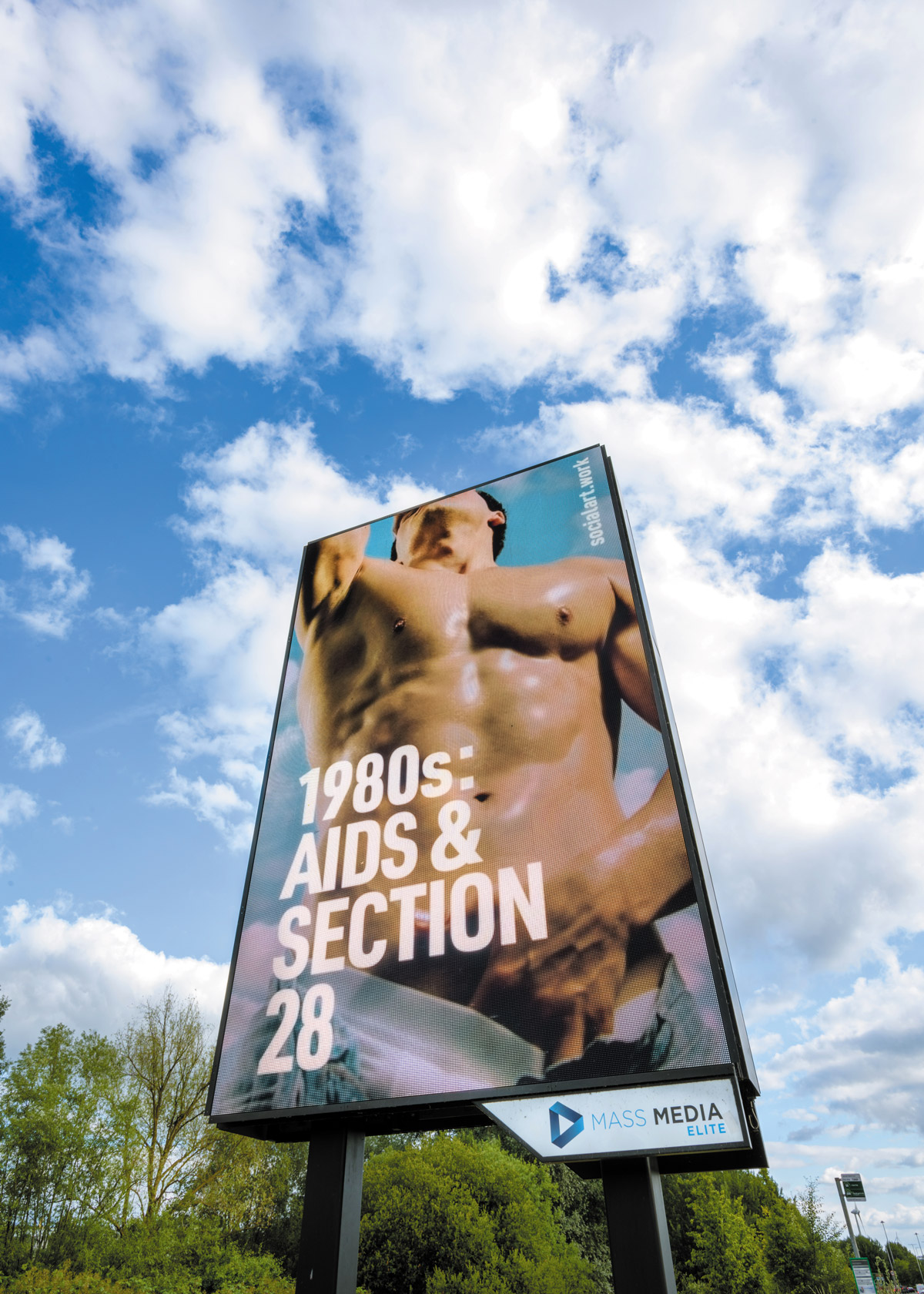We use the cookies _ga, _gat, _gid to collect anonymous data about how you use this site. OK.
2022
Digital billboards
2 of 5 from
Five Decades of Pride
352 x 540px, 352 x 576px, 480 x 720px, 504 x 756px, 576 x 880px, 600 x 280px, 612 x 306px, 640 x 1152px, 696 x 360px, 720 x 357px, 864 x 432px, 880 x 576px, 900 x 450px, 1080 x 1920px, 1224 x 324px, 1280 x 360px, 2160 x 3840px jpeg RGB colour
July 2022
UK-wide
For the LGBT+ community, the 1980s were shadowed by the AIDS health crisis and the passing of Section 28 into UK law.
On 12 December 1981, The Lancet reported the first AIDS death in the UK: a 49-year-old gay man died at Brompton hospital in October of that year from an AIDS related illness.
The virus causing Aids, now known as HIV, was identified in 1984. Soon thereafter a test for HIV antibodies – indicating exposure to the virus – was approved for use in the UK.
It wasn't until 1987 that the UK Government launched a long-overdue health awareness campaign called
Don’t Die of Ignorance.
The campaign leafleted every household in the UK and used television commercials, posters and billboards to raise awareness about HIV and its transmission.
The tabloid press labelled HIV the ‘gay plague’ making it easier for the large Conservative majority in Parliament to pass Section 28 into law on 24 May 1988.
The text of Section 28 read,
A local authority shall not: (a) intentionally promote homosexuality or publish material with the intention of promoting homosexuality; (b) promote the teaching in any maintained school of the acceptability of homosexuality as a pretended family relationship.
This criminalisation of the ‘promotion of homosexuality’ resulted, particularly, in the isolation of young and often vulnerable LGBT+ people who deserved better.
The artwork
1980s: Aids & Section 28
draws again on the gay beefcake aesthetics of magazines like
Zipper
published during the 1980s.



